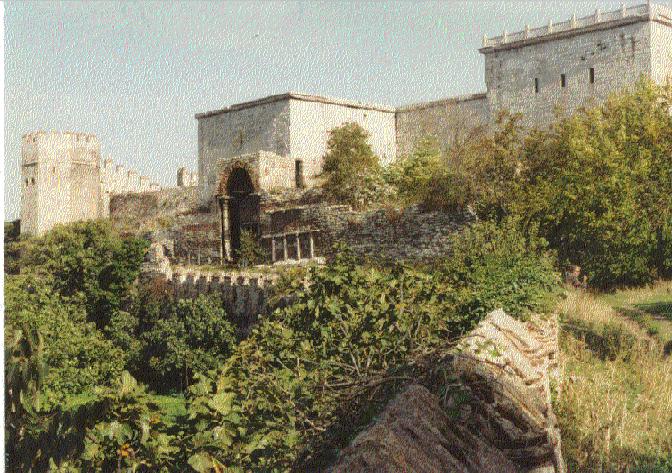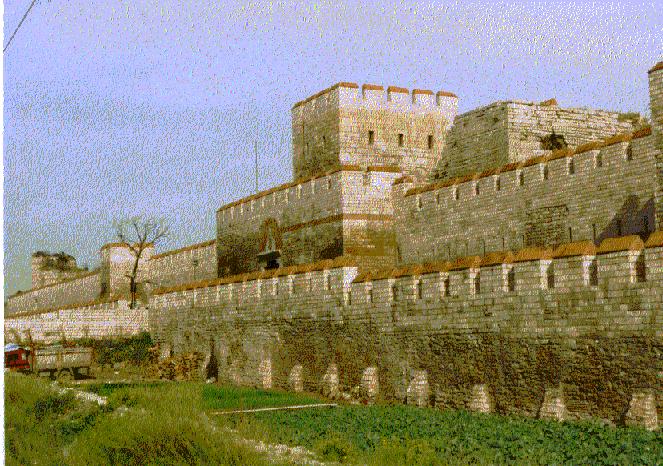 |
 |
 |
| The Golden Gate, through which victorious Emperors rode in triumph on return from campaigns. Near the southern end of the Land Walls of Constantinople, this is a double gate. The smaller, arched gate at the front was built in the reign of Theodosius the Great (379-395) as a triumphal arch, and was later incorporated into the second line of land walls (the first is visible in the foreground). The larger structure at the rear, built into the Inner Wall incorporates an enormous Triple Gate (most of which has since been walled up), and was originally surmounted by gigantic statues of elephants. After the Turkish Conquest, the Golden Gate was converted to a self-contained fortress by building a wall enclosing a part of the city behind. It is now known as Yedikule (the Seven Towers). For virtual reconstructions of this and other features of Byzantium in 1200 AD click here |
| The Blachernae (Vlachernai) region, at the northern end of the Walls of Theodosius (the Land Walls) near the Golden Horn harbour. The Palace of Blachernae was built as an Imperial residence under the later Emperors, who preferred it to the Boukoleon Palace by the Sea of Marmara. The name refers to the region now known as Wallacia, the home of the original Vlach occupants of Thrace, who were dispossessed by the Romans and Byzantines. |
| The Triple Walls of Theodosius, near the Silivri Kapi (Gate). This section of the walls has been heavily restored (amid great controversy) to what was thought to be its original glory. Some idea of scale can be gained from the truck at the bottom left hand corner. The first two walls can be seen easily, but the Inner one is mainly hidden behind the others. However, several of its towers are visible. These walls withstood 19 sieges, and were never taken until the Turks blew huge holes in them with cannon in 1453. (The Fourth Crusade of 1204 got in through the less formidable harbour walls) |
 |
| The tomb in Hagia Sofia cathedral of Enrico Dandolo, the Doge of Venice and leader of the infamous Fourth Crusade of 1204, which sacked Constantinople. His body was removed and, some say, tossed in the Bosphorus, when the Byzantine Emperors returned to Constantinople in 1265. |
| Constantinople |
| The view from our hotel room in 1992 - past the towers of the Turkish Palace complex, across the Sea of Marmara and th Bosphorus Strait to Asia |
 |